There’s nothing quite like a rose garden in full bloom — the colors, the fragrance, and the timeless beauty of each petal. But behind every gorgeous rosebush is one secret weapon: proper pruning.
Many gardeners shy away from pruning, fearing they’ll make a wrong cut and damage their plants. The truth? Pruning is one of the most powerful tools you have to encourage strong growth, abundant blooms, and long-lasting health.
Whether you’re nurturing a single hybrid tea rose on your balcony or tending to an entire rose garden, this detailed guide will teach you how to prune rose bushes for maximum blooms — step-by-step, with expert techniques for every type of rose.
Why Pruning Is Essential
Roses, like most flowering shrubs, need pruning not just for appearance, but for survival and productivity. Without it, they become tangled, disease-prone, and bloom less each year.
Here’s what pruning actually does:
- Stimulates new growth: Roses bloom on new wood, so pruning triggers fresh shoots that will bear more flowers.
- Improves air circulation: Reduces the risk of fungal diseases like black spot and powdery mildew.
- Shapes the plant: Keeps bushes compact, balanced, and aesthetically pleasing.
- Removes dead or weak wood: Directs energy toward strong, productive canes.
- Encourages larger, longer-lasting blooms: More light and airflow = better flowers.
Think of pruning as a rose’s annual “reset” — removing the old to make room for new beauty.
Step 1: Gather the Right Tools
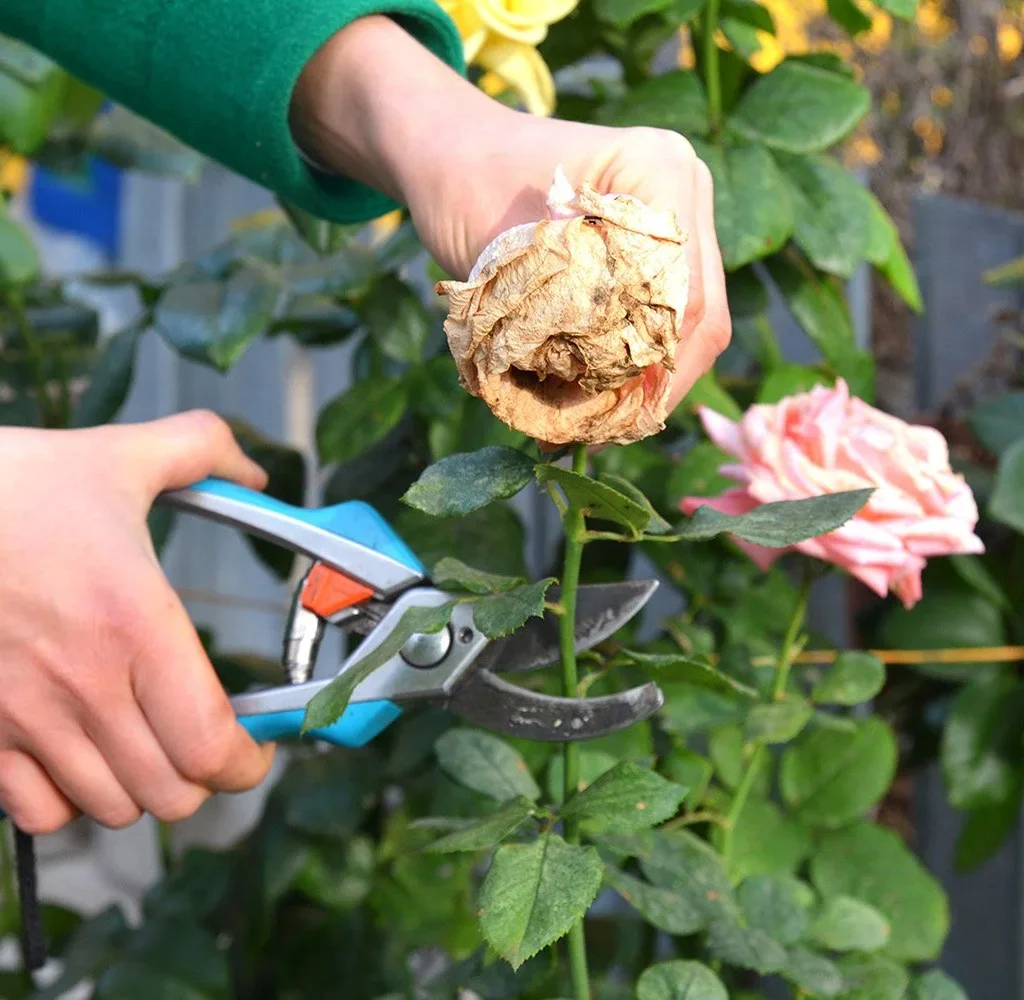
Before you start cutting, make sure you have sharp, clean tools. Dull blades crush stems and make plants vulnerable to infection.
You’ll need:
- Bypass pruners: For cutting stems up to ½ inch thick.
- Loppers: For thicker canes or old wood.
- Pruning saw: For removing very large or woody branches.
- Gloves: Heavy-duty rose gloves protect against thorns.
- Disinfectant: To clean your tools between cuts or between bushes (use rubbing alcohol or a 10% bleach solution).
Pro Tip: Always clean tools before and after pruning — diseases spread quickly through shared tools.
Step 2: Know the Right Time to Prune
Timing is everything when it comes to roses. Pruning too early can expose tender growth to frost damage, while pruning too late can cut off new buds before they bloom.
General rule:
- Prune in late winter or early spring, just as new buds begin to swell but before leaves fully open.
In warm climates: Prune in January or February.
In cooler regions: Wait until March or early April.
Pro Tip: A simple gardener’s trick — prune when forsythia shrubs start blooming in your area. Nature’s timing rarely fails.
Step 3: Identify Your Rose Type
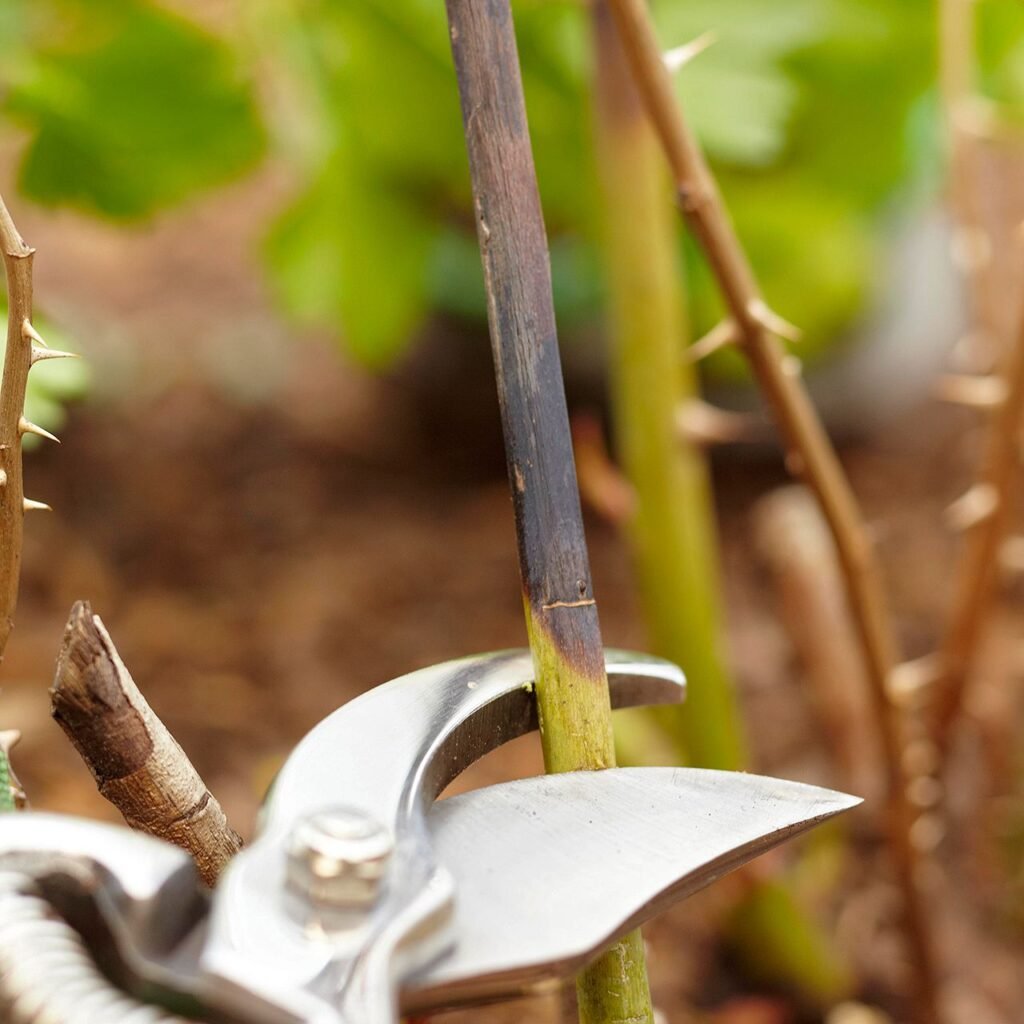
Different roses grow and bloom in different ways. Knowing what kind of rose you have will help you prune correctly for maximum results.
1. Hybrid Tea, Floribunda, and Grandiflora Roses (Modern Roses)
- These bloom on new growth each year.
- Need hard pruning to encourage strong new shoots.
2. Climbing Roses
- Bloom on old wood (canes from the previous year).
- Should be lightly pruned after flowering, not in early spring.
3. Shrub or Landscape Roses
- Bloom on both old and new wood.
- Require moderate pruning to maintain shape and encourage reblooming.
4. Old Garden Roses or Once-Blooming Varieties
- Bloom only once on last year’s wood.
- Don’t prune heavily in early spring — wait until after flowering.
Pro Tip: If you’re unsure of your variety, prune conservatively the first season. Observe how and when it blooms to guide future pruning.
Step 4: Start with Cleanup Cuts
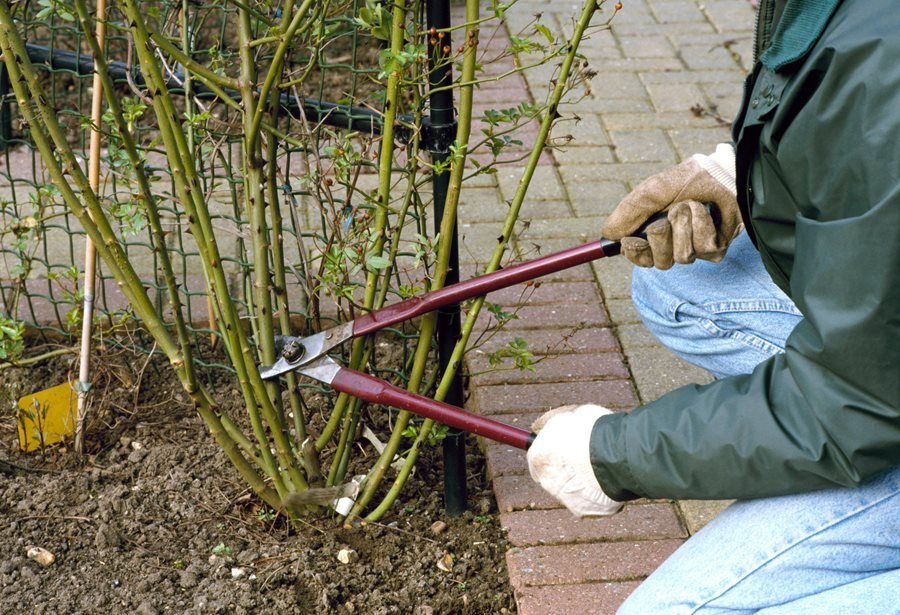
Now that your tools are ready and timing is right, it’s time to begin pruning. Start by clearing out all the dead, damaged, and diseased wood — this “cleanup” stage sets the foundation for healthy new growth.
Here’s how:
- Remove all dead wood. Dead canes are brown and dry inside, while healthy ones are green or white when cut.
- Cut out damaged or crossing branches. These rub together and cause wounds that invite disease.
- Open up the center of the bush. Aim for a vase-like shape that allows sunlight and air to reach the middle.
Pro Tip: Always make cuts at a 45° angle, about ¼ inch above an outward-facing bud. This encourages growth outward, not inward, preventing overcrowding.
Step 5: Prune for Shape and Strength
Now that your rose bush is clean and open, it’s time to shape it for optimal bloom production. The amount you cut depends on your rose type and how vigorously it grows.
For Hybrid Tea and Floribunda Roses:
- Cut the bush back to 12–18 inches tall.
- Leave 3–5 of the strongest canes.
- Remove weak or spindly stems at the base.
- Shorten remaining canes by about one-third to one-half, always cutting to an outward bud.
For Shrub Roses:
- Remove about one-third of the plant’s overall size.
- Focus on removing the oldest, least productive stems to make way for new shoots.
For Climbing Roses:
- Do not remove the main canes.
- Instead, prune the side shoots (laterals) back to 2–3 buds after they bloom.
- Tie and train main canes horizontally — this encourages more flowering shoots along their length.
For Miniature Roses:
- Cut back lightly — about ⅓ of their height.
- Remove dead and tangled stems to keep them tidy and blooming freely.
Pro Tip: The goal is to balance strength and productivity — too few canes, and you’ll have fewer blooms; too many, and they’ll compete for energy.
Step 6: Clean Up and Seal (If Needed)
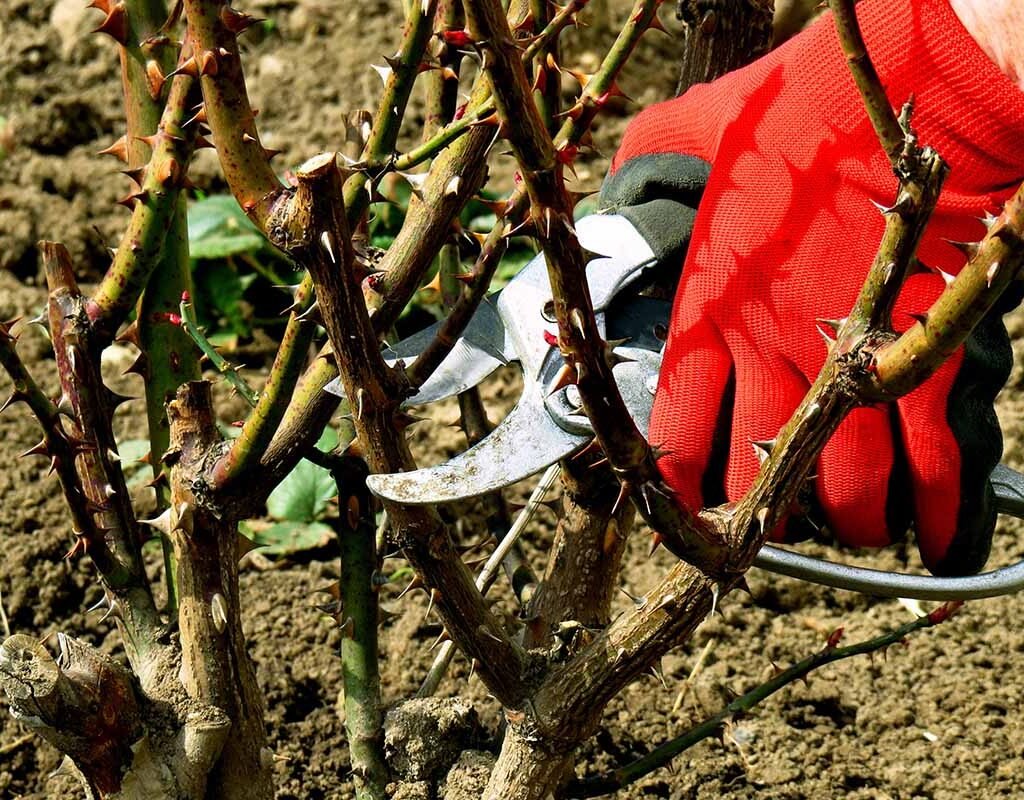
After pruning, clean up all debris around your rose bushes. Dead leaves and cuttings can harbor pests and fungal spores.
Clean-up checklist:
- Remove fallen leaves, twigs, and old mulch.
- Dispose of diseased material — don’t compost it.
- If your climate is humid or disease-prone, apply a protective fungicide spray or organic neem oil.
To seal or not to seal?
- Most modern gardeners skip sealing cuts, as roses heal naturally.
- In wet or cold climates, a dab of pruning sealant on thick cuts can help prevent rot.
Step 7: Feed and Mulch After Pruning
Pruning invigorates your roses, but it also demands energy. After pruning, it’s the perfect time to give your plants a nutrient boost.
Feeding routine:
- Apply a balanced rose fertilizer (like 10-10-10) around the base.
- Scratch it lightly into the soil and water thoroughly.
- Organic options: compost, fish emulsion, or aged manure.
Mulching:
- Add a 2–3 inch layer of organic mulch (wood chips, shredded leaves, or straw) to retain moisture and prevent weeds.
- Keep mulch a few inches away from the base to prevent rot.
Pro Tip: Roses are heavy feeders. Continue fertilizing every 4–6 weeks through the blooming season for continuous flowers.
Step 8: Summer and Deadheading Pruning
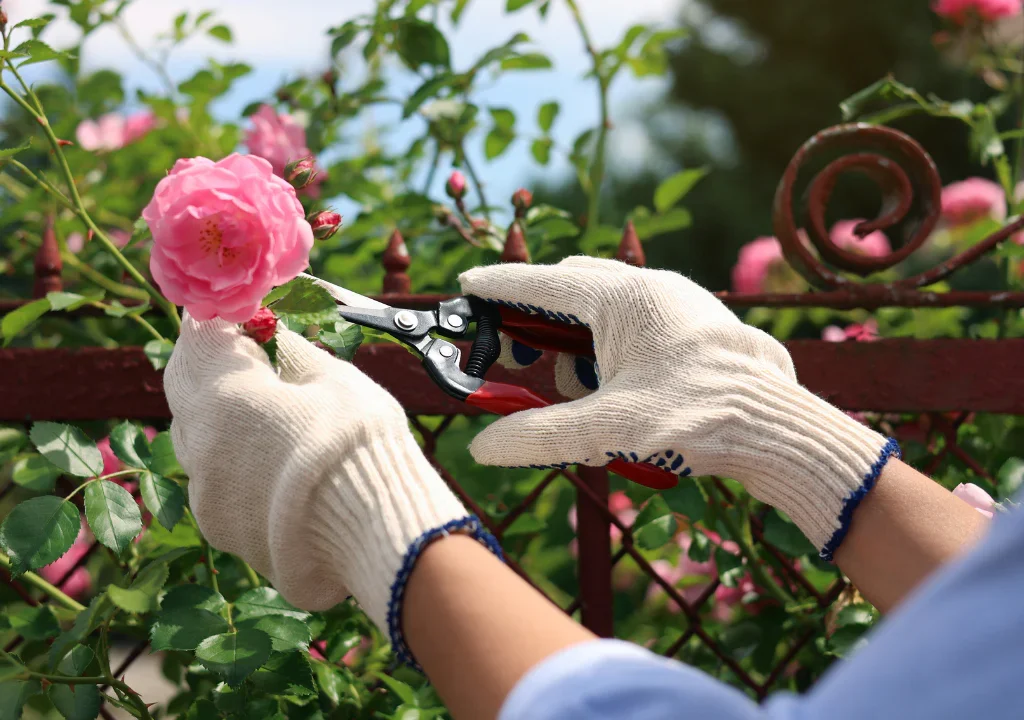
Pruning doesn’t stop in spring! Throughout summer, regular maintenance pruning (or deadheading) keeps blooms coming.
Deadheading tips:
- Cut spent flowers just above the first five-leaflet leaf below the bloom.
- This encourages new growth and more blooms.
- In late summer, stop deadheading to allow rose hips (fruit) to form — this signals the plant to slow down for winter.
Light summer pruning can also help control shape and remove weak shoots.
Step 9: Light Winter Pruning
In cold climates, prune lightly before winter to prevent wind damage. Cut back long, unruly canes to about half their height and tie them loosely to supports.
Then, cover the base with soil, mulch, or straw to protect roots from freezing temperatures.
Pro Tip: Save hard pruning for spring. Winter pruning is just about protection and control, not heavy cutting.
Troubleshooting: Common Rose Pruning Mistakes
Even experienced gardeners make these common mistakes:
Cutting too close to buds: Can damage them and cause dieback.
Always leave about ¼ inch above the bud.
Leaving stubs or ragged cuts: They invite disease.
Use sharp tools for clean cuts at a 45° angle.
Over-pruning: Removes too much growth and delays blooms.
Don’t cut more than half of the healthy wood unless rejuvenating an old, neglected plant.
Ignoring tool hygiene: Spreads fungal infections between bushes.
Disinfect tools regularly during pruning sessions.
Final Thoughts: Pruning Is the Secret to Perfect Roses
Pruning might seem intimidating at first, but once you understand the logic behind each cut, it becomes one of the most satisfying parts of rose care.
Each snip you make is an investment in your rose’s future — guiding its growth, boosting its health, and unlocking its full blooming potential.
So grab your gloves, sharpen those pruners, and get ready to transform your rose bushes into a show-stopping display of color and fragrance.
Because with the right pruning, your roses won’t just survive — they’ll burst into the best bloom of their lives.
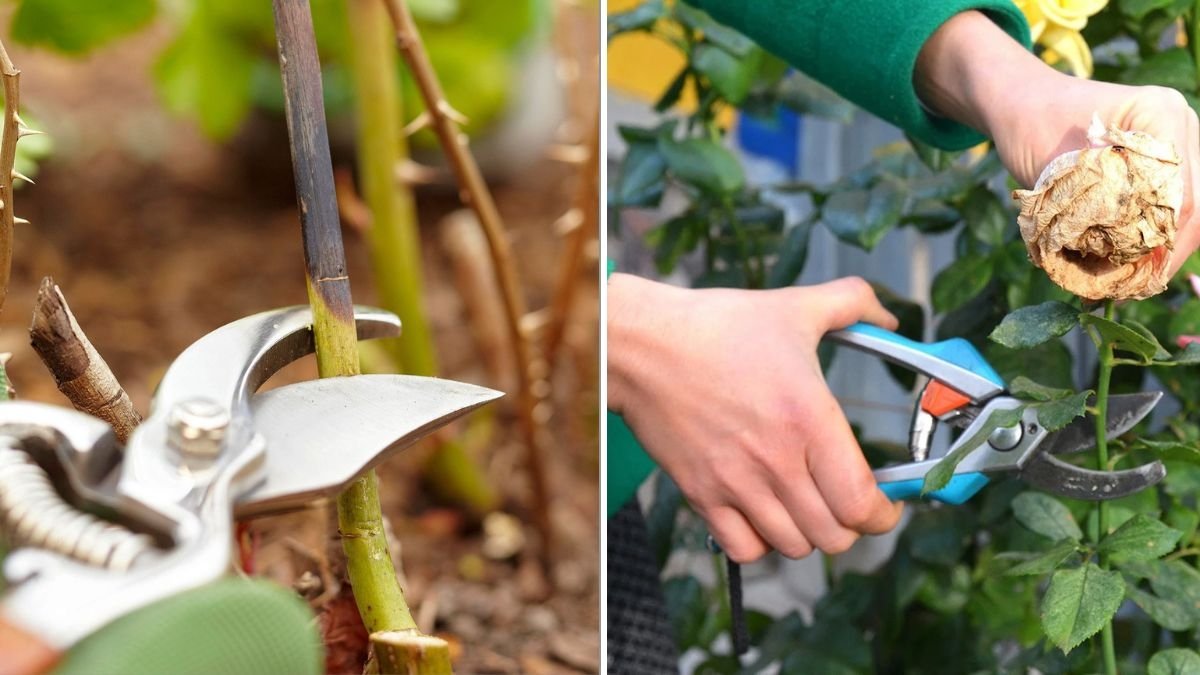





Leave A Comment